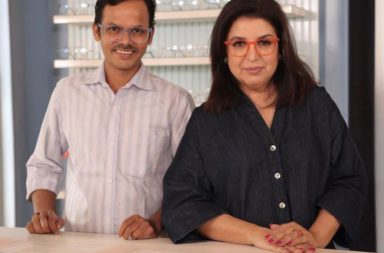K-pop is a global phenomenon that has captivated millions of hearts with its catchy music, synchronised choreography, and charismatic performers. K-Pop has not left the vast subcontinent of India untouched. From viral videos of “Gangnam Style” to the hypnotic melodies of BTS, K-Pop’s tunes and tantalising visuals have managed to capture the hearts of millions. As we immerse ourselves in the catchy hooks and stunning visuals of this Korean wave, it’s essential to understand what lies beneath the polished surface.
However, behind the dazzling performances and fan frenzy lies a darker reality that has begun to surface. As K-Pop continues to gain immense popularity in India and around the world, it’s essential to explore the unsettling truths that sometimes accompany the glitz and glamour of this entertainment genre. In this article, we delve into the disturbing underbelly of K-Pop’s ascent, shedding light on issues such as intense competition, mental health challenges, the pressure to conform to unrealistic beauty standards, invasive fan culture, and the potential road to positive change. Brace yourself for a revealing journey that uncovers the unspoken aspects of K-Pop’s rise.
1. The Plastic Surgery Obsession
It’s no secret that beauty standards in K-Pop are sky-high. To many, the stars seem to possess ethereal beauty, setting unrealistic expectations. A deep dive into the industry reveals that many artists resort to plastic surgery to meet these standards. In a culture where being visually appealing can make or break a career, the pressure is undeniable.
In India, where fairness creams and narrow beauty ideals already dominate the narrative, such elevated standards from K-Pop can further exacerbate our own beauty obsessions. Young fans might find themselves wanting to emulate the “perfect” features of their K-Pop idols, perpetuating unhealthy ideals.
2. Intense Training Regimens of K-pop
K-Pop stars aren’t born overnight. They are meticulously sculpted. Many aspirants join agencies at tender ages, dedicating their lives to the dream of stardom. The training is brutal, spanning years, and covers everything from singing and dancing to foreign language classes. Often, these aspirants live away from family, sacrificing a regular childhood.
Such tales of dedication might sound awe-inspiring to an Indian audience, familiar with tales of Bollywood’s struggle. Yet, unlike Bollywood, where personal connections can help, K-Pop aspirants, irrespective of background, undergo this gruelling routine.

3. Strict Contracts and Mental Health Issues
Once debuted, K-Pop stars are bound by strict contracts and overwhelming schedules. They are under continuous scrutiny, both from their agencies and the public. The pressure to maintain a pristine public image often takes a toll on their mental health. Stories of anxiety, depression, and, tragically, even suicides have surfaced over the years.
The Indian audience, given the tragedies we’ve seen in Bollywood due to similar pressures, can sympathise. Yet, it’s crucial to understand that while K-Pop’s global image is one of synchronised dance and infectious tunes, the reality can be starkly different.
4. A Controlled Private Life
For many K-Pop stars, personal lives are a luxury. Dating bans are commonplace, and stars often cannot be seen in public doing regular activities. This controlled existence is in stark contrast to the freedoms we see Bollywood stars enjoy, despite their own set of challenges.
5. Cultural Misunderstandings
While K-pop’s popularity in India is undeniable, there have been instances of cultural misunderstandings. From using sacred symbols as fashion accessories to making tone-deaf comments, the cultural chasm is occasionally evident. It’s essential for Indian K-pop fans to consume this content critically, understand the different cultural contexts at play.
Also Read: Netflix’s New ‘One Piece’ Adaption Takes the Internet by Storm!
6. The Machine Behind the Glamour of K-pop
Every K-pop band that gains international recognition represents just the tip of the iceberg. For each successful group, there are countless others that never made the cut. Behind the glamorous façade of glitzy music videos and chart-topping hits lies an industry that operates with machine-like efficiency. Artists are often overworked, with back-to-back schedules, promotions, tours, and appearances. It’s not uncommon to hear of K-pop stars collapsing from exhaustion or suffering from chronic health issues due to relentless work. For an Indian audience accustomed to the warm, familial atmosphere often depicted in Bollywood, this aspect of K-pop might seem shockingly cold.

7. The Fan Culture: An Intense Double-Edged Sword
Without its devoted fans from every corner of the world, K-Pop would not be what it is today. These admirers, which are known as fandoms, are a formidable force in reality. They have the ability to catapult the stars to dizzying heights of fame, but they can also be ferociously possessive at the same time. The intense relationship between K-pop idols and their fans is unique and, at times, overwhelming. While Indian cinema has its share of fan clubs and admirers, the fervour seen in K-pop fandoms is unparalleled. However, this extreme adulation can sometimes turn into toxic expectations, where idols’ every move is scrutinised and judged.
8. Idolizing Youth and The Clock That Never Stops Ticking
K-Pop places a significant emphasis on youth. This obsession means that stars, especially females, face an industry that’s always looking for the next young sensation. Ageing in the K-Pop industry comes with its challenges, often leading to stars reinventing themselves or facing early retirements. In India, where veteran actors like Amitabh Bachchan continue to command respect and roles into their later years, this relentless chase for youth might seem both alien and disheartening.
9. Homogenization of Pop Culture
With the global expansion of K-Pop, there is growing concern over the uniformity or homogeneity of pop culture. Although the genre is uniquely Korean, its impact may be found in music, fashion, and aesthetics around the world. For India, a country with a rich tapestry of languages, traditions, and regional entertainment industries, K-Pop’s omnipresence poses a question. Will our diverse cultural expressions be overshadowed by this global phenomenon, or can they coexist, each enriching the other?
10. The Economic Machinery
It’s impossible to discuss K-Pop without addressing the economic behemoth it represents. It’s a multi-billion dollar industry, with every aspect, from trainee selection to global tours, meticulously planned to maximise profit. This commercialization can sometimes overshadow genuine artistic expression. Given India’s vast film and music industry, where art and commerce often find a delicate balance, K-Pop’s unabashedly profit-driven model can be both an inspiration and a warning.

A Way Forward
In appreciating K-Pop, it’s essential for Indian audiences to understand and navigate these complexities, celebrating the art while being conscious of the intricate web behind the scenes.
As K-Pop’s popularity continues to rise, it’s vital to uncover the truths that exist beyond the dazzling stage shows and enchanting music. The world of K-Pop is multifaceted, encompassing dreams, struggles, exploitation, and a growing demand for change. By investigating these hidden realities, we not only acknowledge the difficulties but also we argue for a more compassionate and sustainable future for K-Pop. As India and the rest of the globe celebrate K-Pop’s artistic triumphs, let us also work together to create an atmosphere that safeguards the mental and emotional well-being of both the idols and the fans who adore them.


